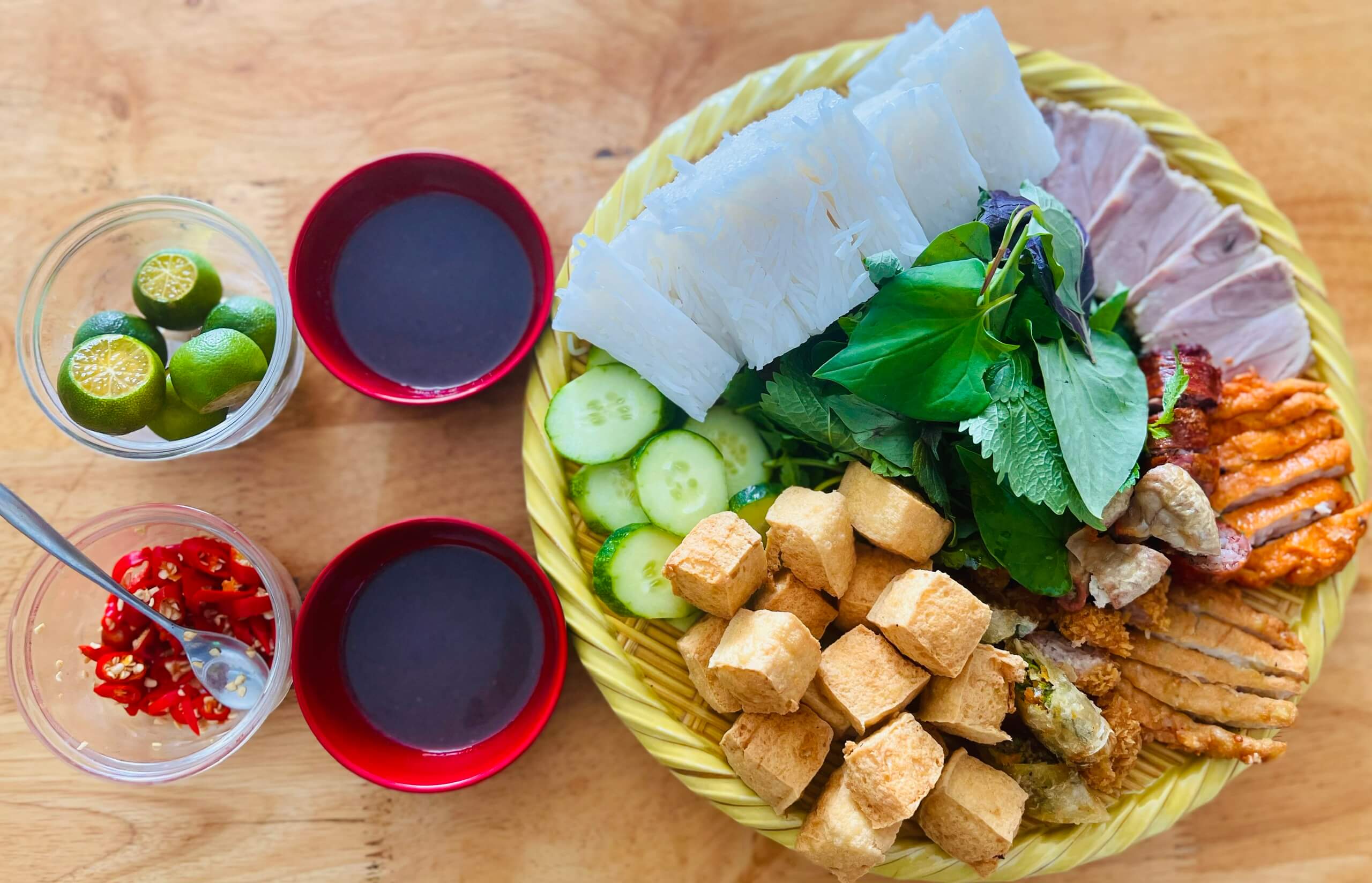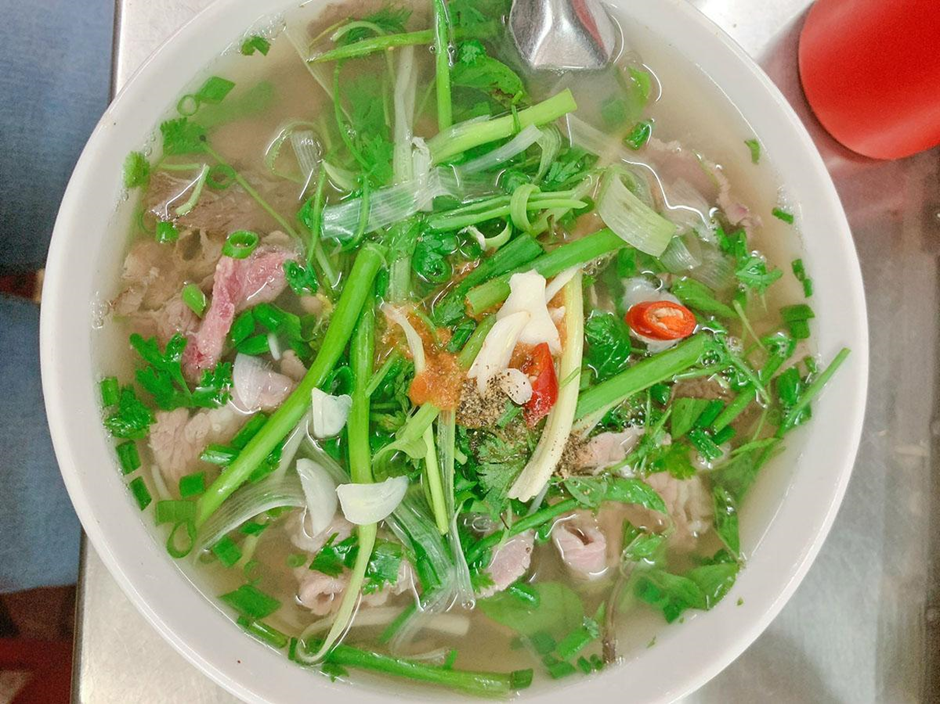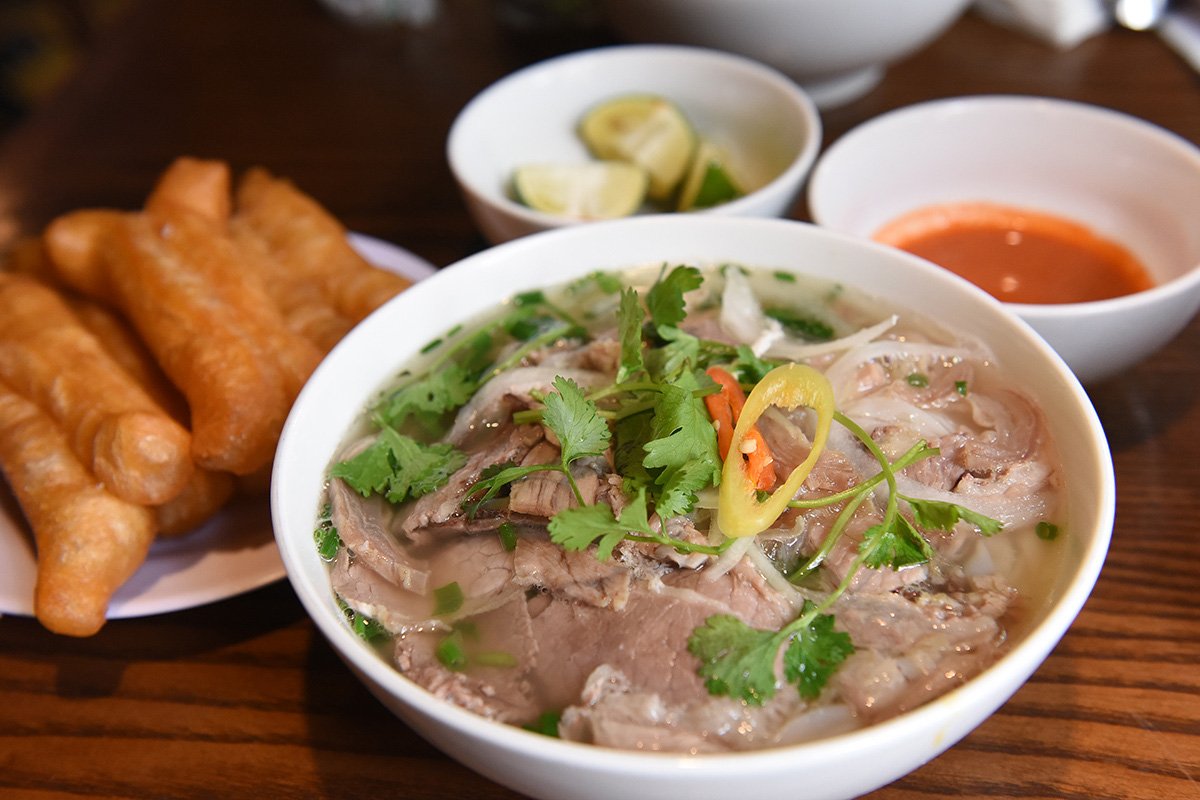(TITC) - TasteAtlas listed the top 10 Most Popular Vietnamese noodle dishes for food lovers around the world.
Being a cradle of wet rice culture, rice is the ionic symbol and an irreplaceable food in Vietnamese’s daily life. From rice, people can create tons of delicious dishes. And one of the delicacies that is made from this magical food is noodles.
10. Rice Vermicelli Noodles with Fried Tofu and Shrimp Paste (Bún đậu mắm tôm)
This dish is famous in Ha Noi. It is known for the smell of fermented shrimp paste, the dipping sauce will be the combination of shrimp paste with a few drops of lemon or kumquat juice. Rice vermicelli noodles, fried tofu, and other side dishes will be served separately, along with a heap of fresh green herbs. A Northern dish is best known as a street food item that is sold by numerous street vendors.

Photo: Vinpearl
9. Fermented Fish Noodle Soup (Bún mắm)
Another dish that is full of aroma that originates from Soc Trang Province (Southern). Bun mắm consists of rice vermicelli noodles, the murky, salty, and fermented fish-flavoured mắm broth, squid, shrimp, catfish, eggplant (which soaks up the broth), fish cakes, and roasted pork belly.
Herbs eating on the side include: rau dang (bitter knotgrass), gia (bean sprouts), he (chives), bap chuoi (banana blossom), keo neo (yellow velvetleaf), rau nhut (water mimosa), and rau muong (morning glory).
As Bún đậu mắm tôm, Bun mắm is also a challenge for those who can’t stand its smell.


Photo: Vinpearl
8. Vietnamese Thick Noodle Soup (Bánh canh)
The thick noodles are made from tapioca or rice flour, while the soup is prepared with different kinds of ingredients such as pork trotters (bánh canh giò heo), snakehead fish (bánh canh cá lóc), or crab (bánh canh cua). You will find the noodle soup is thicker than other Vietnamese noodle soups and the noodles are also chewier. The base is typically made from pork bones or sometimes chicken.
This dish is a typical snack of Southern people. You can find Bánh canh in any corner of the street in Ho Chi Minh City.

Photo: TITC
7. Grilled Pork and Rice Vermicelli (Bún thịt nướng)
This dish can be considered as a sibling of bún chả of Ha Noi. A bowl of Bún thịt nướng will be marinated grilled pork, rice vermicelli noodles, and fresh leafy green vegetables and herbs. Diners will dress nước chấm – a fish sauce that is typically enriched with lime or lemon juice, water, and sugar to Bún thịt nướng to enjoy it.
Besides pork, sometimes, this dish may be varied as other types of meat and seafood, or in a vegetarian version, which contains tofu and vegetables.

Photo: TITC
6. Tomato and Crab Noodle Soup (Bún riêu)
Bún riêu is a crab-based Vietnamese noodle soup. A traditional bowl of Bún riêu contains a tomato base, crab paste and is served with vermicelli noodles. Several versions of this dish will have toppings typically including crab meat, pork, tofu, tomatoes, blood jelly, and a selection of fresh greens such as perilla or bean sprouts.

Photo: Vinpearl
5. Chicken Pho (Phở gà)
Besides Phở Bò, Vietnamese Pho is made with chicken. The broth in phở gà is much lighter and clearer than the one found in phở bò (beef pho). Diners can order chicken pho with different types of meats, white breast meat, dark meat, fat, and skin, or lean chicken with sliced breast meat. Other ingredients used in the preparation of chicken pho often include ginger, fish sauce, rice noodles, shallots, green onions, and cilantro. Garnishes include lime wedges, mint, sliced chilli peppers, bean sprouts, and basil sprigs.

Photo: Vinpearl
4. Quang-Style Noodles (Mì Quảng)
Rice noodle dishes appear in all of Vietnam. Quang noodle originates in Central Vietnam. This Vietnamese classic consists of a combination of flat yellow or white rice noodles that are served with a small amount of flavorful meat broth and crispy fresh vegetables and herbs such as banana blossoms, lettuce, cilantro, scallions, and Vietnamese coriander.
The dish is incredibly versatile and usually comes topped with pork belly, chicken, shrimps, fish, boiled eggs, roasted peanuts.

Photo: TITC
3. Grilled Pork Meatballs with Vermicelli Noodles (Bún chả)
Fragrant and greasy grilled pork, served with soft vermicelli, herbs such as mint and coriander, and a rich dipping sauce (also known as nuoc cham) creating a blend of texture and flavour that makes diners crave for more. Bun cha is a real delight for both locals and international visitors looking for an authentic Vietnamese dining experience. Bun cha holds cultural significance as a symbol of Ha Noi's vibrant street food culture and the spirit of communal dining in Vietnam. Visitors can enjoy Bun Cha with crab spring rolls (Nem cua bể) - a perfect accompaniment to bun cha, will be a great extra added to this flavourful dish. Crispy, greasy fried spring rolls, in the filling are full with attractive pieces of white crab meat.


Photo: Vinpearl
2. Beef Pho (Phở bò)
Vietnamese people often have Pho as breakfast, beef pho is prepared with assorted cuts and parts of beef - the stock is made from beef bones, shank, oxtail, and neck, while the toppings include thinly sliced fatty brisket (gầu), flank, eye-round steak, tripe, cooked and raw beef (tái nạm), tendon (gân), or beef balls (phở bò viên) - this topping is famous in the South of Vietnam.
Dried spices such as cinnamon, star anise, cloves, cardamom, and coriander are added to the broth to increase the aroma. Piping hot Pho is topped with cilantro, sliced onions, and chopped green onions. Diners can put bean sprouts, lime wedges, and sliced hot peppers.

Photo: TITC
1. Pho
Vietnamese Phở is a noodle soup made with rice noodles, beef or chicken clear broth, and various herbs and spices. For the most savoury flavour broth, beef or chicken will simmer in a noodle soup for many hours along with dried spices such as cinnamon, star anise, cloves, cardamom, and coriander. Then, slices of beef or chicken, lime wedges, and fresh herbs, including cilantro, basil, and mint, will frequently be added to the bowl of phở.

Photo: TITC
Tourism Information Technology Center